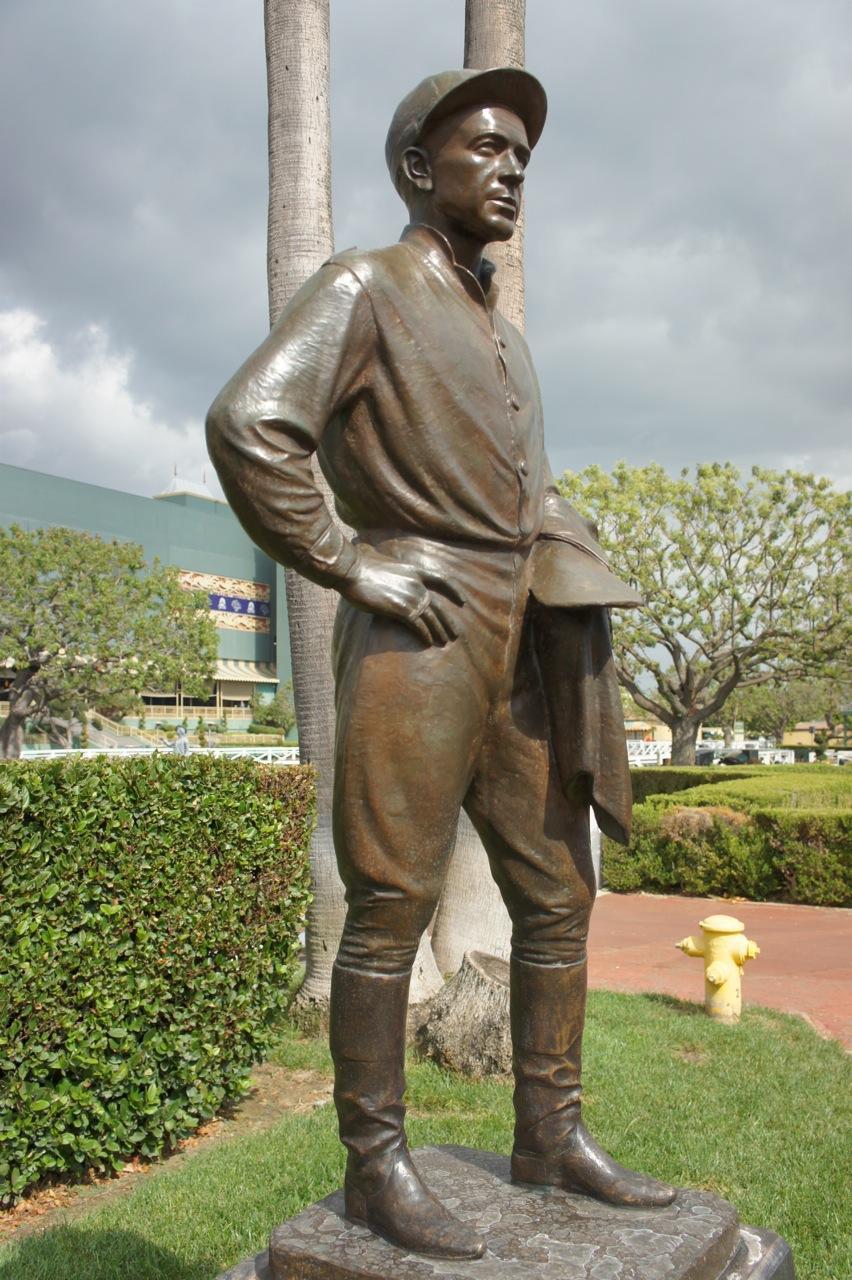
Racing Hall of Fame Trainer Allen Jerkens: The Chief

George Woolf’s career as a jockey was not long by historical standards.
It lasted just 18 years, from 1928 until his tragic death in 1946 at the age of 35, and he had just 3,784 mounts, a figure successful modern-day jockey Russell Baze surpassed in a three-year span.
But in less than two decades, Woolf enjoyed the kind of success and earned a level of respect that was best reflected in his inclusion among the original inductees into the Racing Hall of Fame in 1955.
To this day, nearly 80 years after his death, Woolf remains one of Thoroughbred racing’s most famous and revered riders.

Born in Canada on May 31, 1910, Woolf grew up in a riding family. His mother was a trick rider in a circus and his father was a rodeo rider.
In his teens, he began to compete in rodeo events in his native Alberta and also started to hop aboard racehorses.
He rode his first race in 1928 and within four years became a regular at Santa Anita Park in Arcadia, Calif.
Among his breakthrough wins were the 1932 the Capital Handicap at Laurel Park on Hygro and the 1933 Agua Caliente Handicap on Gallant Sir.
In the late 1930s and early 1940s, Woolf became the dominant jockey in California, winning most of the circuit’s major races.
He won the Santa Anita Handicap in 1935 when it was the nation’s first $100,000 stakes and then captured the Hollywood Gold Cup in three straight years from 1938-1940.
As Woolf’s legend grew, he became famous for having an impeccable ability to move his horses at just the right moment. Reports during those days said Woolf, dubbed “The Iceman” for the cool, skilled manner in which he handled his mounts, rarely lost a photo finish in a stakes during his years at Santa Anita.
He rode champions such as Cavalcade, Challedon, Kayak II, Pompoon, Alsab, Askmenow, Busher, By Jimminy, Devil Diver, Durazna, Mar-Kell, Market Wise, Pavot, Whirlaway, and, of course, Seabiscuit.
Woolf’s most famous race came in 1938 when he stepped in for an injured “Red” Pollard and rode Seabiscuit in the Pimlico Special, which turned out to be a match race with 1937 Triple Crown winner War Admiral.
Earlier that year, when Woolf first took over the mount, he rode Seabiscuit and rallied from 14th in a field of 18 and lost by a nose in the Santa Anita Handicap. But Woolf rode subsequent races with Seabiscuit much differently. In an August 1938 match race with Ligaroti at Del Mar, Woolf and Seabiscuit battled for the early lead and won by a nose in a thriller.
Three months later, in the Pimlico Special, Woolf coaxed enough early speed out of Seabiscuit to grab the lead. War Admiral joined him on the backstretch and the two dueled until they turned into the stretch when Seabiscuit heroically pulled away from the favored Triple Crown champ and won by four lengths.
Decades later, the Pimlico Special, and Woolf’s ride in it, was a central part in the 2003 movie “Seabiscuit.” Hall of Fame rider Gary Stevens played Woolf in the film, which was nominated for an Academy Award as Best Picture.
In the 1940s, Woolf rode for part of the year in New York and added races like the Jockey Club Gold Cup, Metropolitan Handicap, Belmont Futurity, Saratoga Special, Hopeful and Coaching Club American Oaks to his laurels.
Yet for all of his success on a racetrack, Woolf fought a long battle with diabetes that adds even more glitter to his accomplishments. Forced to monitor his weight and preserve his strength, Woolf rode in roughly four or five races a week, or about 200 in a year, for much of his career, limiting his career win total to a modest 721.
While insulin helped Woolf battle the disease, there were side effects as the treatments could leave him dizzy at times – and on one awful day it may have cost him his life.
On Jan. 3, 1946 at Santa Anita, Woolf agreed to ride a horse named Please Me for a friend even though he was feeling ill. On the first turn, he suddenly fell off the horse. He hit the ground with so much force that he suffered a fatal concussion and passed away the following day.
As the racing world mourned the loss of one of its greatest stars, no one could ever explain why Woolf fell. Reports say he fainted as his long battle with diabetes ended in an utterly tragic manner.
Stunned by Woolf’s passing, the sport honored its fallen champion in many ways.
A life-sized bronze statue of Woolf was placed near the walking ring at Santa Anita.
In 1950, Santa Anita inaugurated the annual George Woolf Memorial Jockey Award in his honor with the goal of presenting it to riders whose careers and personal character earn esteem for the individual and the sport of Thoroughbred horse racing. Still considered one of the sport’s greatest honors, among the many distinguished Woolf Award recipients is Stevens, who portrayed Woolf in the movies.
To this day, memories of “The Iceman” still burn brightly. In many corners of the racing industry, mention of his name will still spark memories of a gifted rider whose time on the racetrack may have been cut heartbreakingly short but was nonetheless utterly unforgettable.
George Woolf
Birthplace: Cardston, Alberta
Birthdate: May 31, 1910
Died: Jan. 4, 1946
Honors: Inaugural inductee into Racing Hall of Fame, also a member of Canada Sports Hall of Fame, Canadian Horse Racing Hall of Fame. George Woolf Memorial Jockey Award created in his honor to recognize a rider whose career and personal character earn esteem for the individual and the sport of Thoroughbred racing. Life-sized bronze statue erected in his honor near Santa Anita Park walking ring.